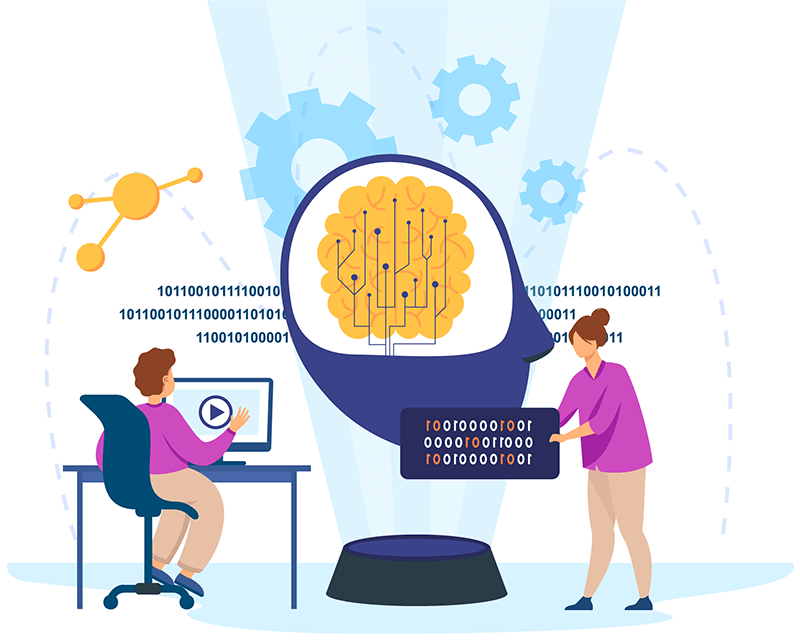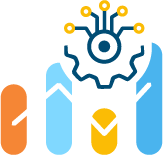
As the realm of machine learning experiences a notable ascent, fresh challenges arise, prompting ML developers and technology firms to engineer innovative solutions. Machine learning can be perceived as software infused with an extra intelligence layer, diverging from traditional software due to its inherently experimental nature. This distinction introduces unique elements such as robust data, model architecture, code, hyperparameters, and features. Naturally, machine learning tools and developmental processes diverge, making MLOps the distinctive counterpart to DevOps in the traditional software development landscape.
In the tech landscape, DevOps constitutes a set of practices streamlining expansive software systems’ development, testing, deployment, and operation. This has resulted in truncated development cycles, heightened deployment velocity, and the creation of more auditable and reliable system releases. In contrast, MLOps emerged as a practice that fosters collaboration and communication between data scientists and operations professionals. These practices not only elevate the end quality but also simplify management processes and automate the deployment of machine learning and deep learning models in extensive production environments. MLOps serves as the bridge that facilitates seamless alignment of models with business needs and regulatory requirements, ensuring the harmonious integration of machine learning into operational workflows.
What encompasses machine learning model management?
Embedded within MLOps, model management plays a pivotal role in ensuring the consistency and scalability of ML models to meet business requirements seamlessly. To achieve this, implementing a logical and user-friendly policy for model management becomes imperative. ML model management extends its responsibilities to encompass the development, training, versioning, and deployment of ML models.
It’s worth noting that versioning in this context isn’t limited to the model but includes the associated data. This inclusive approach tracks the dataset or subset utilized in training a particular model version.
In developing novel ML models or adapting them to new domains, researchers engage in numerous experiments involving model training and testing. These experiments explore different model architectures, optimizers, loss functions, parameters, hyperparameters, and data variations. Researchers leverage these experiments to identify the optimal model configuration that strikes the right balance between generalization and performance-to-accuracy compromises on the dataset.
However, the absence of a systematic approach to track model performance and configurations across various experiments can lead to chaos. Even for a solo researcher conducting independent experiments, keeping tabs on all experiments and their outcomes proves challenging. This is precisely where model management steps in. It empowers individuals, teams, and organizations to:
Why machine learning model management is essential
Machine Learning (ML) Model Management is a critical component in the operational framework of ML pipelines (MLOps), providing a systematic approach to handle the entire lifecycle of ML processes. It plays a pivotal role in tasks ranging from model creation, configuration, and experimentation to the meticulous tracking of different experiments and the subsequent deployment of models. Upon closer inspection, ML Model Management encompasses the oversight of two vital facets:
- Models:
Oversees the intricate processes of model packaging, lineage, deployment strategies (such as A/B testing), monitoring, and the necessary retraining when the performance of a deployed model falls below a predetermined threshold. - Experiments:
Manages the meticulous logging of training metrics, loss, images, text, and other relevant metadata and encompasses the systematic versioning of code, data, and pipelines.
The absence of effective model management poses significant challenges for data science teams attempting to navigate the complexities of creating, tracking, comparing, recreating, and deploying models. In contrast, reliance on ad-hoc practices leads to non-repeatable, unsustainable, unscalable, and disorganized ML projects. Furthermore, research conducted by AMY X. ZHANG∗ at MIT and others underscores the collaborative nature of efforts among Data Science (DS) workers in extracting ML insights from data. Teams extensively collaborate, adhering to best practices such as documentation and code versioning. MLOps facilitates this collaboration by providing tools for globally dispersed and asynchronous collaborations among data scientists. However, the conventional perspectives on data science collaboration predominantly focus on the viewpoint of the data scientist, emphasizing technical tools like version control. True collaboration within a data science team entails various dimensions:
- Problem definition talks:
Engaging in discussions with stakeholders to define the initial problem. - Insightful experiment feedback:
Offering valuable comments to improve the collective understanding of experiments. - Leading development initiatives:
Taking control of existing notebooks or code as a foundational starting point for further development. - Collaborative model management:
Joining forces between researchers and Data Scientists during training, evaluation, and model tagging. - Shared model repository:
Creating a model registry for business stakeholders to review and assess production models.
Exploring collaboration in data science teams
Collaboration overview
In the dynamic realm of data science, understanding the depth of collaboration within teams is paramount. Let’s delve into the collaboration reporting percentages across various roles:
In data science team dynamics, collaboration emerges as a fundamental aspect, reflecting the intricate interplay among diverse roles. The collaborative landscape, as depicted in the reporting percentages, unveils noteworthy patterns. Notably, roles such as Engineer/Analyst/Programmer exhibit an impressive collaboration reporting percentage of 99%, underscoring the integral nature of their contributions. Similarly, Communicators and Researchers/Scientists demonstrate robust collaboration, boasting percentages of 96% and 95%, respectively. Even managerial and executive roles, represented by Manager Executives at 89% and Domain Executives at 87%, actively contribute to the collaborative fabric within data science teams. These percentages illuminate the significance of teamwork across varied roles, showcasing a collective effort in pursuing practical and synergistic data science endeavors.
Insights into collaboration trends
Three stood out among the roles during the research, with collaboration rates exceeding 95%. These roles are the bedrock of a successful machine learning (ML) team.
The research underscores that Researchers, Data Scientists, and ML Engineers actively collaborate, playing pivotal roles throughout the entire ML model lifecycle. This lifecycle encompasses development, training, evaluation (considering accuracy, performance, and bias), versioning, and deployment, collectively called ML Model Management.
Further reinforcement of model management's significance
Here are some compelling reasons highlighting the critical importance of robust model management:
- Establishing a singular source of truth: A foundation for reliability
- Facilitating versioning: benchmarking and reproducibility made seamless
- Streamlining debugging: ensuring traceability and compliance with regulations
- Expediting research and development: accelerating innovation
- Boosting team efficiency: providing a clear sense of direction
- Fostering collaboration: intra-team and inter-team
Exploring the components of ML model management
While learning Machine Learning model management, it’s necessary to understand the critical components of ML model management to guide us through the essence of this concept.
Model monitoring:
A critical element that tracks the inference performance of models, pinpointing signs of serving skew. This skew occurs when changes in data cause a deployed model’s performance to decline below the score or accuracy observed during training.
Experiment tracker:
This tool is indispensable for collecting, organizing, and monitoring model training and validation information. It proves valuable across multiple runs, accommodating different configurations such as learning rate, epochs, optimizers, loss, batch size, and datasets with various splits and transforms.
Model registry:
As a centralized tracking system, the model registry keeps tabs on trained, staged, and deployed ML models, ensuring a streamlined and organized repository.
Data versioning:
Unlike version control systems primarily used for managing changes in source code, data version control adapts these processes to the data realm. It facilitates the management of model changes concerning datasets and vice versa.
Code versioning/notebook checkpointing:
Essential for overseeing alterations in the model’s source code, this component ensures a systematic approach to tracking and managing code changes.
Navigating the distinct realms of ML model management and Experiment Tracking
Within the intricate tapestry of machine learning operations (MLOps), the relationship between ML Model Management and Experiment Tracking unfolds as a nuanced interplay. Not merely a standalone entity, experiment tracking emerges as a vital subset of model management, harmonizing seamlessly within the broader MLOps framework. Its role extends beyond mere data collection, embracing the intricate tasks of organizing and monitoring model training and validation across a spectrum of runs, each characterized by unique configurations – from hyperparameters and model size to data splits and parameters.
As we delve into the realm of experimentation inherent in machine learning and deep learning, the indispensable role of experiment-tracking tools like OptScale becomes apparent, serving as benchmarks for the myriad models under scrutiny.
These tools embody a triad of essential features:
Dynamic dashboards:
Elevating accessibility and comprehension, experiment tracking tools weave together a visual dashboard. This dynamic platform is a hub for visualizing all logged and versioned data. It facilitates the nuanced performance comparison through visually compelling components such as graphs. It orchestrates the ranking of diverse experiments, streamlining the evaluative journey. A harmonious synergy emerges in this intricate dance between ML Model Management and Experiment Tracking, charting the course for innovative strides within the MLOps landscape.
Logging brilliance:
Offering a sophisticated avenue for logging experiment metadata, these tools encapsulate metrics, loss, configurations, images, and other critical parameters. This meticulous logging ensures a comprehensive record of the experiment’s multifaceted dimensions.
Version control mastery:
Beyond mere experimentation, these tools shine in version control, deftly tracking data and model versions. This prowess proves invaluable in production environments, fostering effective debugging processes and laying the groundwork for continuous improvements. Version control becomes the linchpin for systematically evolving data and models.
Meet on GitHub page OptScale – MLOps and FinOps open source platform to run ML/AI and regular cloud workloads with optimal performance and cost
OptScale offers ML/AI engineers:
- Experiment tracking
- Model versioning
- ML leaderboards
- Hypertuning
- Model training instrumentation
- Cloud cost optimization recommendations, including optimal RI/SI & SP utilization, object storage optimization, VM Rightsizing, etc.
- Databricks cost management
- S3 duplicate object finder



